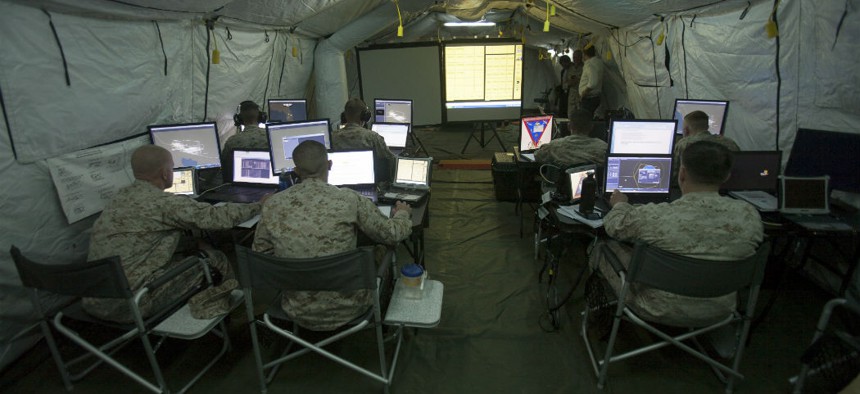
New Army gaming prototype preps soldier for future war
Synthetic prototyping project uses simulated environments to inform the development and acquisitions priorities of the Army.
Beneath the flashy graphics of the U.S. Army’s new simulation, Operation Overmatch, lies its primary purpose: the Army hopes the data it gleans from Overmatch players will help shape how the U.S. wages future wars.
A joint effort of the U.S. Army Game Studio, Training and Doctrine Command, and Research and Development Command, Operation Overmatch seeks to leverage the insight of soldiers in order to inform how currently fielded platforms and those under development might be used on the battlefield.
The gaming environment is an Early Synthetic Prototyping (ESP) effort of the Army, a program that was launched by the Army Capabilities Integration Center (ARCIC) and the Office of the Assistant Secretary for Acquisition, Logistics, and Technology. ESP efforts aim to use simulated environments to inform the development and acquisitions priorities of the Army.
According to a TRADOC statement, the current version of the simulation features scenarios focused on “manned/unmanned teaming at the squad and platoon level in an urban environment.” However, a spokesperson confirmed that in future versions of the game, TRADOC hopes to expand the size of the teams and types of environments players can experience. Currently, up to 16 soldiers split between two teams face off against AI enemies.
The current version of the simulation also features “variants of manned armored vehicles, robotic vehicles and unmanned aerial vehicles,” according to the same statement. The Army hopes that soldiers who use the game can leverage their expertise to inform developers which technologies or platforms work and in which configurations.
In addition to feedback from these soldiers, the Army also plans to use analytics generated from gameplay to better understand how technologies themselves are being used. Through these metrics, the Army believes it can streamline efforts that would otherwise go into the physical prototyping of technologies. “In a game environment, we can change the parameters or the abilities of a vehicle by keystrokes,” said Lt. Col. Brian Vogt, the ESP project lead at ARCIC, in an earlier statement regarding the advantages of the system.
Operation Overmatch isn’t the first time the Army has experimented with games to push forward institutional efforts. America’s Army, a series also developed by Army Game Studios and first released in 2002, was used as a recruiting effort for the service and eventually reached over 13 million players.
Overmatch is currently in the alpha stage of its development. A TRADOC spokesperson said that the command hopes to implement the program’s beta testing stages with a larger group of players around this year’s Association of the United States Army conference in early October.